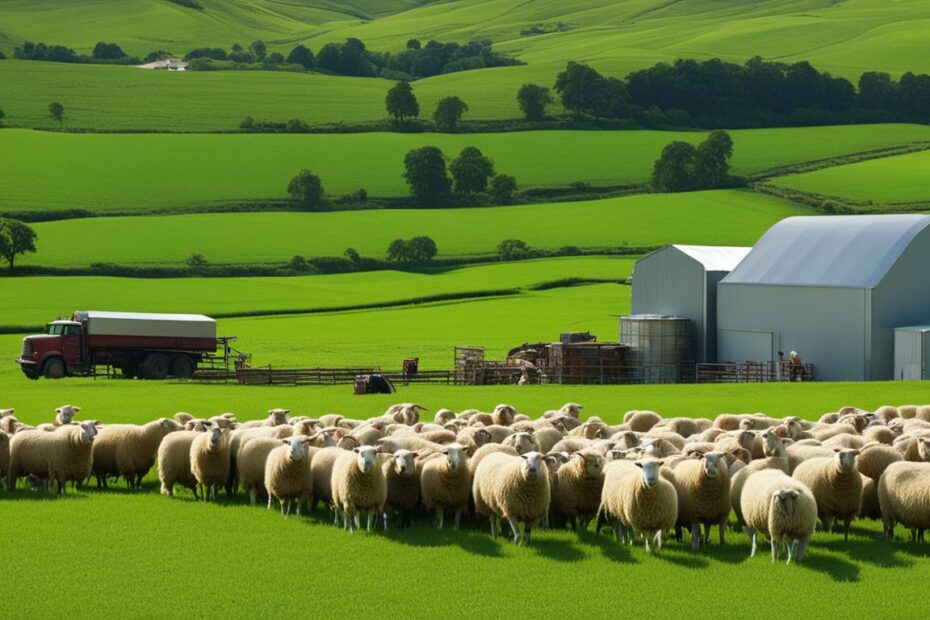Are you interested in tapping into the profitable world of sheep farming? With effective management skills and careful consideration of available resources, you can turn your passion for sheep into a lucrative business. Whether you’re looking to raise sheep for meat, wool, fiber, or milk production, this practical guide will provide you with valuable insights and strategies to maximize your profits and seize the various sheep business opportunities available in the market.
Key Takeaways:
- Sheep farming offers multiple avenues for making money, including meat, wool, dairy, and fiber production.
- Choosing the right breed of sheep is crucial to aligning your products with market demand and available resources.
- Efficient management practices and investment strategies are key to maximizing profits in sheep entrepreneurship.
- Sustainable and ethical practices play a vital role in successful sheep and goat raising.
- Understanding the economics of sheep farming and managing risks are essential for long-term success.
Sheep Entrepreneurship Tips for Maximizing Profits
When it comes to sheep farming, implementing effective management practices and investment strategies can significantly impact the profitability of your business. Here are some valuable tips to help you maximize your profits in sheep farming:
1. Focus on Breed Selection
Choosing the right breed of sheep is crucial for maximizing profits. Consider market demand and your available resources when selecting breeds. Some breeds may be more suitable for meat production, while others excel in wool or milk production. Research and consult with experts to identify breeds that align with your desired products and can thrive in your specific farming conditions.
2. Optimize Grazing and Feeding Practices
Efficient grazing and feeding practices can significantly impact your bottom line. Create a rotational grazing system that allows your sheep to access fresh pasture regularly. This practice not only maximizes nutrition but also minimizes the risk of parasite infestations. Additionally, consider supplementing their diet with quality feed to ensure optimal health and growth.
3. Embrace Technology
Incorporating technology into your sheep farming operations can streamline processes and improve efficiency. Explore software and apps that can help you track flock performance, monitor health records, manage inventory, and track expenses. Embracing technology can save you time, reduce labor costs, and ultimately maximize your profits.
Quote: “By implementing these sheep entrepreneurship tips, you can enhance your profitability and set your sheep farming business up for long-term success.” – Sheep Farming Expert
Remember, maximizing profits in sheep farming requires continuous learning, adaptability, and a proactive approach to managing your flock. Stay updated with industry trends, attend workshops and conferences, and network with other sheep farmers to gain insights and knowledge that can further enhance your profitability. By implementing these tips and making informed decisions, you can optimize your sheep farming venture and achieve financial success.
Strategies for Successful Sheep and Goat Raising
Successful sheep and goat raising requires a combination of management skills and sustainable practices. To ensure a thriving and profitable business, aspiring producers should focus on developing certain skills and implementing effective strategies.
1. Knowledge of Animal Husbandry
Gaining a comprehensive understanding of animal husbandry is crucial for successful sheep and goat raising. This includes learning about nutrition, health management, breeding techniques, and proper handling practices. By acquiring knowledge in these areas, producers can provide appropriate care and optimize the health and productivity of their livestock.
2. Pasture Management
Efficient pasture management is essential for sustainable sheep and goat farming. It involves ensuring access to quality grazing, rotation of pastures, and proper fencing to prevent overgrazing and minimize the risk of disease transmission. Good pasture management enhances the nutrition and well-being of the animals while maximizing the use of land resources.
3. Breeding and Genetics
Selecting the right breeds and genetics is a key factor in successful sheep and goat raising. Producers should choose animals that are well-suited for their specific goals and local conditions. Breeding strategies should aim to improve desirable traits such as meat quality, milk production, or fiber yield. Engaging with breeders and attending livestock shows can provide valuable insights into different breeds and their performance.
4. Marketing and Sales
Effectively marketing and selling sheep and goat products is essential for profitability. Producers should develop a marketing plan that targets potential buyers, such as local markets, specialty meat shops, or fiber enthusiasts. Building relationships with buyers and promoting the unique qualities and benefits of their products can help generate demand and secure consistent sales.
By integrating these strategies into their farming practices, aspiring sheep and goat producers can increase their chances of success. Continuous learning, adaptation to industry trends, and a passion for sustainable agriculture are necessary for long-term profitability in this rewarding field.
Understanding the Economics of Sheep Farming
When venturing into sheep farming, it is crucial to have a clear understanding of the economics involved. This knowledge will enable you to make informed decisions and maximize your income generation potential. Several factors play a significant role in the economic aspects of sheep farming, including market demand, production costs, and revenue streams.
Market demand is a key consideration when determining the profitability of sheep farming. Conduct thorough research on the demand for sheep products in your target market. This can include meat, wool, milk, or fiber, depending on your chosen focus. Understanding the trends and preferences of consumers will help you tailor your production to meet their needs, resulting in higher profitability.
Another crucial aspect of the economics of sheep farming is the management of production costs. Consider the expenses involved in raising and maintaining the flock, such as feed, veterinary care, labor, and infrastructure. Assessing these costs and finding ways to optimize efficiency will contribute to your overall financial success as a sheep farmer.
“Understanding the economics of sheep farming is essential for managing a profitable enterprise.”
Finally, it is important to diversify your revenue streams in sheep farming. Explore potential value-added opportunities, such as direct marketing of your products or creating unique sheep-related merchandise. By diversifying your income sources, you can mitigate risks and capitalize on various market channels, ultimately increasing your profitability.
| Factors to Consider | Importance |
|---|---|
| Market Demand | High |
| Production Costs | High |
| Diversification of Income | Medium |
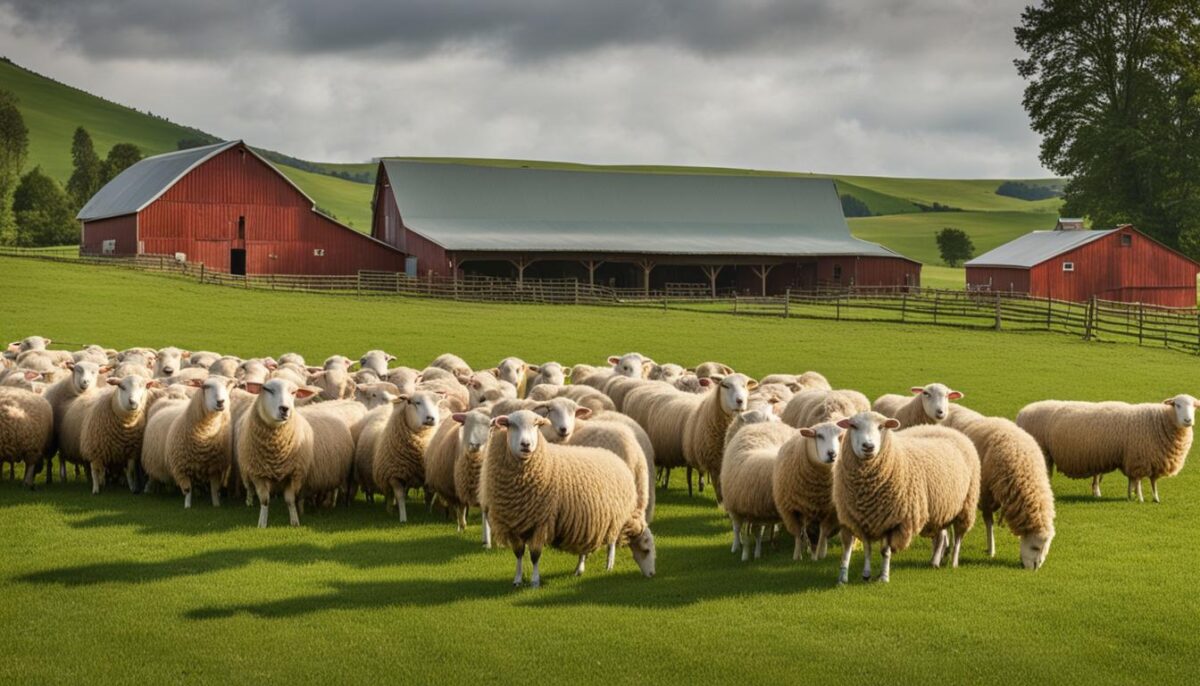
In conclusion, understanding the economics of sheep farming is fundamental to building a profitable and sustainable enterprise. By analyzing market demand, managing production costs, and exploring diversification opportunities, you can maximize your income generation potential. Remember to stay informed about industry trends and adapt your strategies accordingly to stay competitive in the ever-evolving sheep farming market.
Maximizing Wool Production in Sheep Farming
When it comes to sheep farming, maximizing wool production can be a key factor in increasing profits. The sheep wool industry offers numerous opportunities for farmers to tap into the demand for wool products. By implementing effective wool production strategies, farmers can ensure high-quality wool and meet the needs of the market.
Wool Breeds and Genetics
Breeds that are specifically known for their wool production, such as Merino, Rambouillet, and Corriedale, can be excellent choices for maximizing wool production. These breeds have desirable wool traits, including fiber fineness, crimp, and staple length, which contribute to high-quality wool. Farmers should carefully select breeding stock with desirable genetics to maintain and improve wool production traits in their flocks.
Proper Nutrition and Flock Management
Providing sheep with a nutritionally balanced diet is crucial for optimal wool growth. Adequate levels of protein, energy, vitamins, and minerals should be provided through high-quality forage and supplementation, if necessary. Additionally, regular flock management practices, such as proper shearing, parasite control, and maintaining a clean and dry environment, are essential for healthy sheep and optimal wool production.
Quality Shearing Techniques
The shearing process plays a vital role in maximizing wool production. Skilled and experienced shearers can ensure a clean and efficient shearing, minimizing stress and potential damage to the wool. Proper handling and storage of the shorn wool are also important to maintain its quality. Farmers should establish relationships with professional shearers who are knowledgeable about wool handling and ensure the wool is handled with care from shearing to sale.
| Wool Production Strategies | Benefits |
|---|---|
| Regular health check-ups and vaccinations | Prevents diseases and promotes overall flock health, leading to better wool production |
| Implementing a breeding program | Allows farmers to selectively breed sheep with desirable wool traits, improving wool quality and production |
| Proper pasture and forage management | Ensures sheep have access to high-quality nutrition, contributing to better wool growth |
| Investing in quality shearing equipment | Enables efficient and effective shearing, minimizing stress on the sheep and potential damage to the wool |
By implementing these wool production strategies and focusing on the quality of wool, sheep farmers can effectively maximize their wool production and meet the demands of the sheep wool industry. With careful attention to breeding, nutrition, flock management, and shearing techniques, farmers can ensure a sustainable and profitable wool production enterprise.
Dairy Sheep Farming: A Lucrative Opportunity
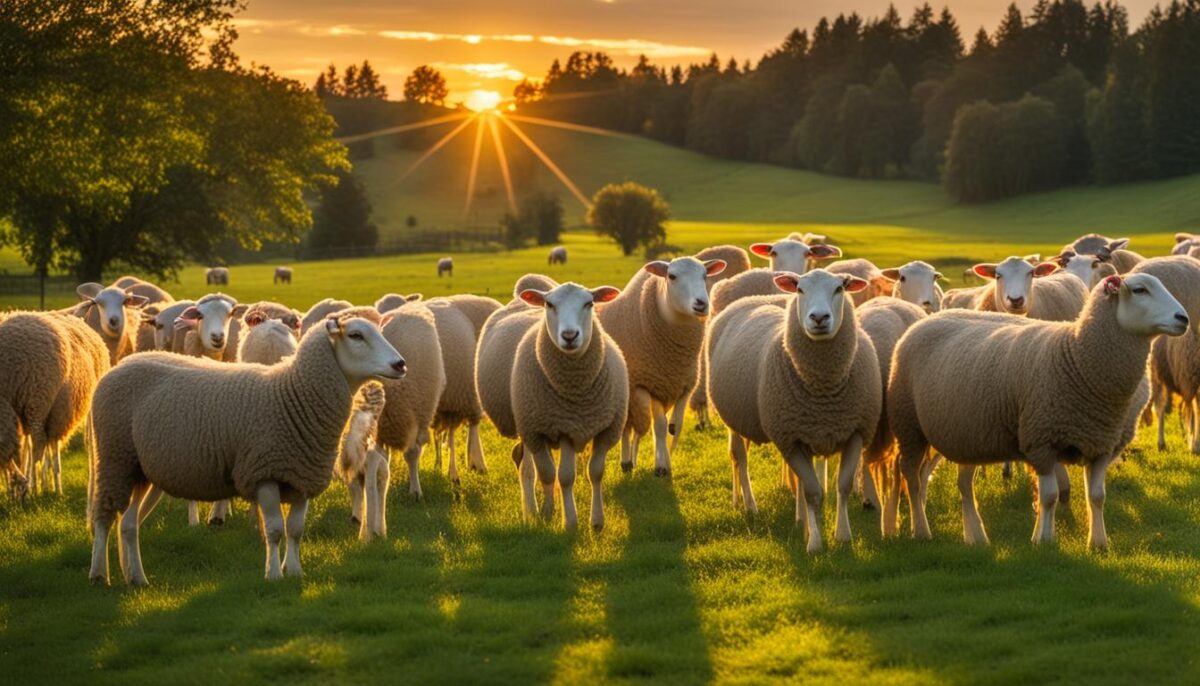
Dairy sheep farming presents a lucrative opportunity for individuals looking to make money from sheep. The production of sheep milk and its various by-products offers a niche market with high potential for profitability. With the right management practices and a focus on product quality, dairy sheep farmers can tap into a growing demand for specialty dairy products.
Sheep milk production has several advantages over traditional cow milk, making it a sought-after choice for consumers. Sheep milk has a higher protein and fat content, as well as a unique flavor profile that appeals to discerning taste buds. Additionally, sheep milk contains higher levels of beneficial nutrients and is suitable for individuals with lactose intolerance.
One of the key aspects of successful dairy sheep farming is selecting the right breeds. Certain sheep breeds, such as East Friesians and Lacaune, are specifically bred for milk production and have high milk yields. These breeds are known for their ability to produce large quantities of high-quality milk, making them ideal for dairy operations.
H3: Dairy Sheep Milk Products
Sheep milk can be transformed into a wide range of dairy products, including cheese, yogurt, butter, and ice cream. These products have gained popularity among consumers due to their unique flavors and textures. Sheep milk cheeses, such as Roquefort and Pecorino Romano, have long been revered for their distinctive taste and are considered delicacies in the culinary world.
| Product | Description | |
|---|---|---|
| 1 | Sheep Milk Cheese | A variety of artisanal cheeses with rich flavors and textures. |
| 2 | Sheep Milk Yogurt | A creamy and tangy yogurt with a distinct taste. |
| 3 | Sheep Milk Butter | A rich and flavorful butter with a higher fat content. |
| 4 | Sheep Milk Ice Cream | A creamy frozen dessert with unique and indulgent flavors. |
Sheep milk and its derived products offer a niche market with strong profit potential. The superior nutritional profile and unique flavor of sheep milk, combined with the versatility of dairy products, create opportunities for value-added offerings that cater to discerning consumers.
To succeed in dairy sheep farming, farmers must prioritize herd management, including proper nutrition, milking techniques, and animal health. Developing relationships with local retailers, specialty food stores, and restaurants can help establish a market for sheep milk products.
By capitalizing on the growing demand for specialty dairy products and focusing on quality and sustainability, dairy sheep farmers can carve out a profitable niche in the agricultural industry.
Opportunities in Sheep Wool and Fiber Products
The sheep wool and fiber industry offers a wide array of opportunities for entrepreneurs and artisans alike. With the increasing demand for sustainable and eco-friendly materials, sheep wool and fiber products have gained popularity in various markets such as crafts, textiles, and fashion. The versatility of wool and fiber allows for the creation of unique and high-quality products that appeal to a diverse range of customers.
Wool crafts and textiles have a rich history and continue to be valued for their exceptional qualities. Wool fibers are known for their warmth, durability, and natural moisture-wicking properties, making them ideal for creating cozy blankets, soft garments, and insulating home decor. From hand-knit sweaters to intricately woven rugs, wool crafts showcase the skill and artistry of makers while offering consumers timeless and sustainable products.
“Sheep wool and fiber products provide a beautiful combination of functionality and aesthetics. The natural fibers are not only environmentally friendly but also offer superior insulation and comfort. The craftsmanship and attention to detail in woolen products make them stand out in today’s mass-produced world.”
As the wool market trends evolve, there are also emerging opportunities for innovative products that cater to niche markets. With the rise of sustainable fashion and conscious consumerism, there is a growing demand for ethically-sourced and locally-produced wool and fiber products. Artisans who specialize in hand-dyeing, felting, or spinning techniques can create unique and one-of-a-kind pieces that cater to the preferences of eco-conscious customers.
By exploring the opportunities in the sheep wool and fiber industry, entrepreneurs and artisans can tap into a market that values quality, sustainability, and craftsmanship. With a range of products including clothing, accessories, home decor, and more, there are endless possibilities to create profitable and meaningful businesses in the world of sheep wool and fiber products.
| Product Category | Market Demand | Business Potential |
|---|---|---|
| Hand-knit Sweaters | High | Lucrative |
| Wool Blankets | Steady | Established |
| Felted Accessories | Growing | Promising |
| Spun Yarn | Niche | Specialized |
| Hand-dyed Fibers | Trending | Innovative |
| Home Decor | Expanding | Artistic |
Managing Risks and Challenges In Sheep Farming
Sheep farming, like any business venture, comes with its own set of risks and challenges. Being aware of these potential obstacles and having effective strategies in place to mitigate them is crucial for the success and profitability of a sheep farming enterprise. By identifying and managing risks, farmers can ensure the overall health and well-being of their flock, as well as maintain a sustainable and profitable operation.
Risk Management Strategies
Implementing risk management strategies is essential in sheep farming to minimize potential losses and maximize productivity. Some effective risk management practices include:
- Proper animal health management: Maintaining a strict vaccination schedule, regular health checks, and proper nutrition can help prevent the spread of diseases and reduce the risk of illness among the flock.
- Emergency preparedness: Having contingency plans in place for natural disasters, such as floods or wildfires, ensures the safety of the flock and protects valuable assets.
- Diversification: Spreading the business across different markets, such as meat, wool, dairy, or fiber production, can help minimize the impact of market fluctuations and reduce risk exposure.
- Financial planning: Developing a solid financial plan that includes budgeting, tracking expenses, and managing cash flow can help farmers navigate financial challenges and make informed decisions.
Challenges in Sheep Farming
While sheep farming can be a rewarding venture, there are several challenges that farmers may encounter along the way. Some common challenges in sheep farming include:
- Predator attacks: Protecting the flock from predators, such as wolves or coyotes, requires the implementation of effective fencing, guard animals, or other deterrents.
- Weather fluctuations: Extreme weather conditions, such as severe winters or droughts, can impact forage availability and require additional feed and shelter measures to ensure the well-being of the flock.
- Market volatility: Fluctuations in market demand and prices can pose challenges for sheep farmers. Staying informed about market trends and having strategies in place to adapt to changing consumer preferences is essential.
- Labor-intensive tasks: Sheep farming involves labor-intensive tasks such as lambing, shearing, and pasture management. Finding skilled labor or managing these tasks efficiently can be challenging.
By understanding and proactively addressing these challenges, sheep farmers can develop resilient and sustainable farming practices, ensuring the long-term success of their operations.
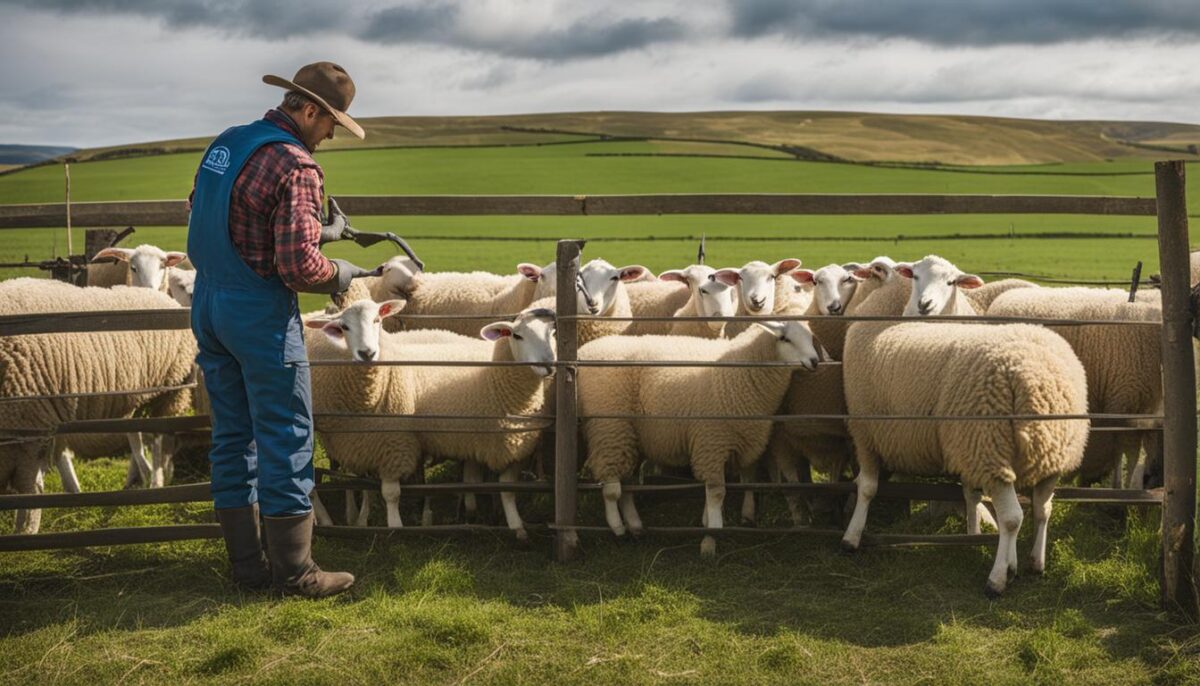
Future Trends in Sheep Farming and Market Opportunities
The sheep farming industry is continuously evolving, driven by changing consumer preferences, technological advancements, and market trends. As the world becomes more environmentally conscious and sustainable practices gain momentum, sheep farming presents promising opportunities for entrepreneurs looking to capitalize on emerging trends.
One of the key future trends in sheep farming is the growing demand for organic and pasture-raised sheep products. Consumers are increasingly seeking high-quality, ethically produced meat, wool, and dairy products. By adopting sustainable farming practices such as rotational grazing, organic feed, and reduced chemical use, sheep farmers can tap into this market and command premium prices for their products.
Another exciting opportunity lies in the expanding market for sheep milk and dairy products. Sheep’s milk is highly nutritious, rich in vitamins and minerals, and has a unique flavor profile. It is particularly popular in artisanal cheese production and offers a lucrative avenue for diversifying sheep farming operations. By investing in specialized dairy sheep breeds and acquiring the necessary equipment for milk processing, farmers can tap into this niche market and cater to the growing demand for sheep’s milk products.
Table: Emerging Opportunities in the Sheep Industry
| Opportunity | Market Potential | Description |
|---|---|---|
| Organic Sheep Farming | High | Capturing the demand for organic, pasture-raised sheep products |
| Sheep Milk Production | Medium | Meeting the growing demand for sheep milk and dairy products |
| Value-added Wool Products | High | Creating unique, environmentally friendly wool products for niche markets |
| Sheep Grazing Services | Medium | Providing sustainable land management services using grazing sheep |
| Sheep Agrotourism | Low | Offering educational and recreational experiences on sheep farms |
Additionally, the demand for value-added wool products is on the rise. With a growing interest in sustainable and cruelty-free fashion, consumers are seeking eco-friendly alternatives to synthetic fibers. Sheep farmers can tap into this market by producing high-quality, ethically sourced wool and creating value-added products such as organic yarn, hand-knit garments, and eco-friendly home textiles.
Furthermore, sheep grazing services are gaining popularity as an environmentally friendly land management solution. Many landowners are looking for natural alternatives to chemical-based weed control methods. By offering sheep grazing services, farmers can help manage vegetation in a sustainable manner while providing a source of additional income.
Lastly, sheep agrotourism presents a niche opportunity for farmers to diversify their income streams. With a rising interest in farm experiences and rural tourism, sheep farms can offer educational and recreational activities such as farm tours, sheep shearing demonstrations, and wool spinning workshops. This not only generates revenue but also promotes awareness and appreciation for the sheep industry.
As the sheep farming industry continues to evolve, it is essential for entrepreneurs to stay informed about market trends and seize emerging opportunities. By embracing sustainability, value-added products, and innovative practices, sheep farmers can position themselves for long-term success in the ever-changing market.
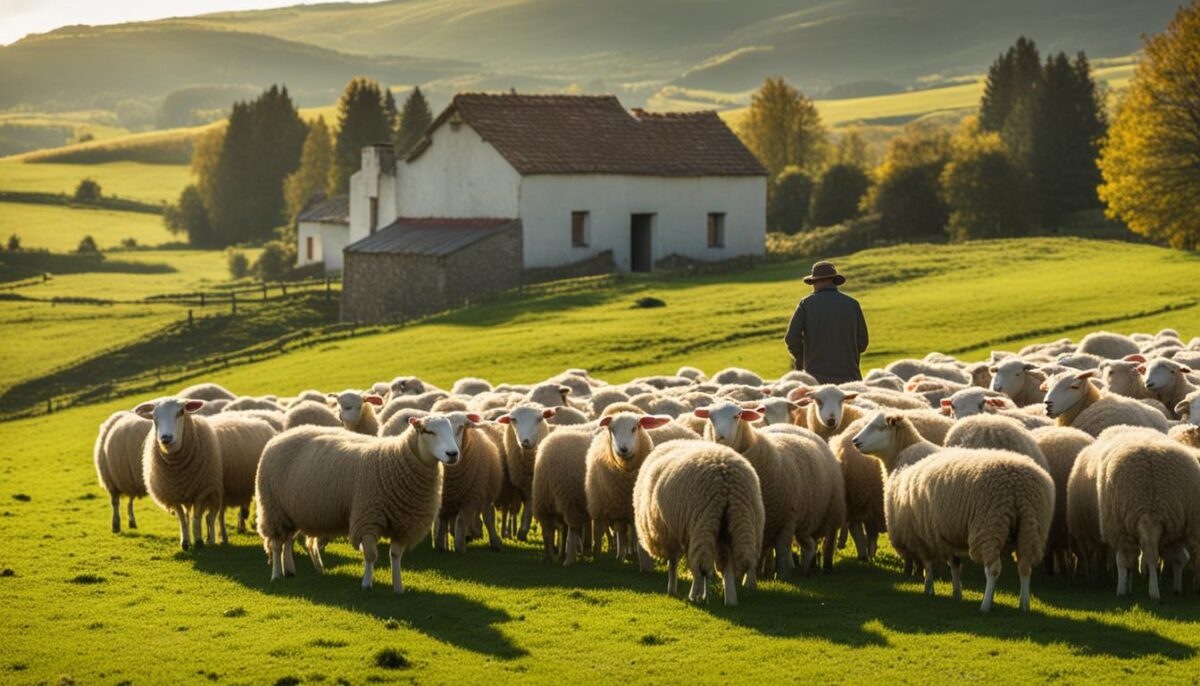
The Benefits of Continuous Education and Skill Development
Continuously investing in education and skill development can yield several benefits for sheep producers. Firstly, it helps enhance the overall productivity and efficiency of the farm. By staying updated with the latest techniques and best practices, producers can optimize their operations, streamline processes, and minimize waste. This can lead to improved flock performance, higher yields, and reduced costs.
Secondly, continuous education and skill development enable producers to adapt and innovate in response to market demands. By understanding consumer preferences, emerging trends, and value-added opportunities, producers can diversify their product offerings and tap into niche markets. This allows them to stay competitive, create additional income streams, and forge stronger connections with customers.
Lastly, ongoing learning fosters personal and professional growth for sheep producers. It cultivates a mindset of curiosity, adaptability, and lifelong learning, which is essential in a rapidly changing industry. Continuous education not only equips producers with the knowledge and skills needed to succeed but also empowers them to become effective leaders and advocates for sustainable farming practices.
Conclusion
Sheep farming offers a rewarding and profitable business opportunity for those willing to invest time, resources, and skills. By understanding the market, selecting suitable animals, implementing efficient management practices, and exploring value-added opportunities, individuals can make money from sheep farming in various ways such as meat, wool, dairy, and fiber production.
Continuous learning, staying updated on industry trends, and adapting to market demands are key to long-term success in the sheep industry. With careful planning, proper resource management, and a passion for the industry, individuals can thrive in the world of sheep farming and generate sustainable income.
Throughout this practical guide, we have provided valuable insights and strategies to help you succeed in your sheep farming venture. Remember, success in sheep farming comes from a combination of knowledge, experience, and dedication. So, equip yourself with the right skills, stay informed on the latest industry advancements, and embrace the opportunities that the sheep farming industry presents. Start your journey today and unlock the potential for financial rewards and personal fulfillment that sheep farming can bring.
FAQ
What type of animals can be raised for profit in sheep farming?
Sheep can be raised for meat, wool, fiber, or milk production. The selection of animals should align with market demand and available resources.
How do I select suitable breeds for my sheep farming venture?
When selecting breeds, consider their traits such as meat or wool production, milk production, or hair-shedding abilities. Popular options include Cheviot, Dorset, Hampshire, Suffolk, Border Leicester, Columbia, and Rambouillet.
Where can I purchase sheep for my farm?
You can purchase sheep through sales or from reputable breeders to ensure their health and quality.
What equipment do I need for sheep farming?
Equipment such as feeders and water systems should be considered to provide appropriate care and nutrition for the sheep.
What are some tips for successful sheep entrepreneurship?
Successful sheep entrepreneurship requires efficient management practices and effective investment strategies. Some tips include proper resource management, strategic breeding, and exploring value-added opportunities.
How can I maximize wool production in sheep farming?
Strategies for maximizing wool production include proper nutrition, regular shearing, and breeding for desirable wool traits.
What are some considerations for successful dairy sheep farming?
Important considerations in dairy sheep farming include selecting suitable dairy sheep breeds, proper nutrition, and implementing efficient milking practices.
What are the opportunities in the sheep wool and fiber industry?
The sheep wool and fiber industry offers various opportunities such as selling raw wool, producing fiber crafts, or supplying the textile industry.
How can I manage risks and overcome challenges in sheep farming?
Strategies for managing risks and challenges in sheep farming include implementing proper biosecurity measures, diversifying income streams, and seeking professional advice.
What are some future trends and market opportunities in sheep farming?
The future of sheep farming presents emerging opportunities such as organic and sustainable production, niche markets, and value-added products.
Why is continuous education and skill development important in sheep farming?
Continuous learning and skill development are crucial for staying updated on industry trends, improving management practices, and adapting to changing market demands.


